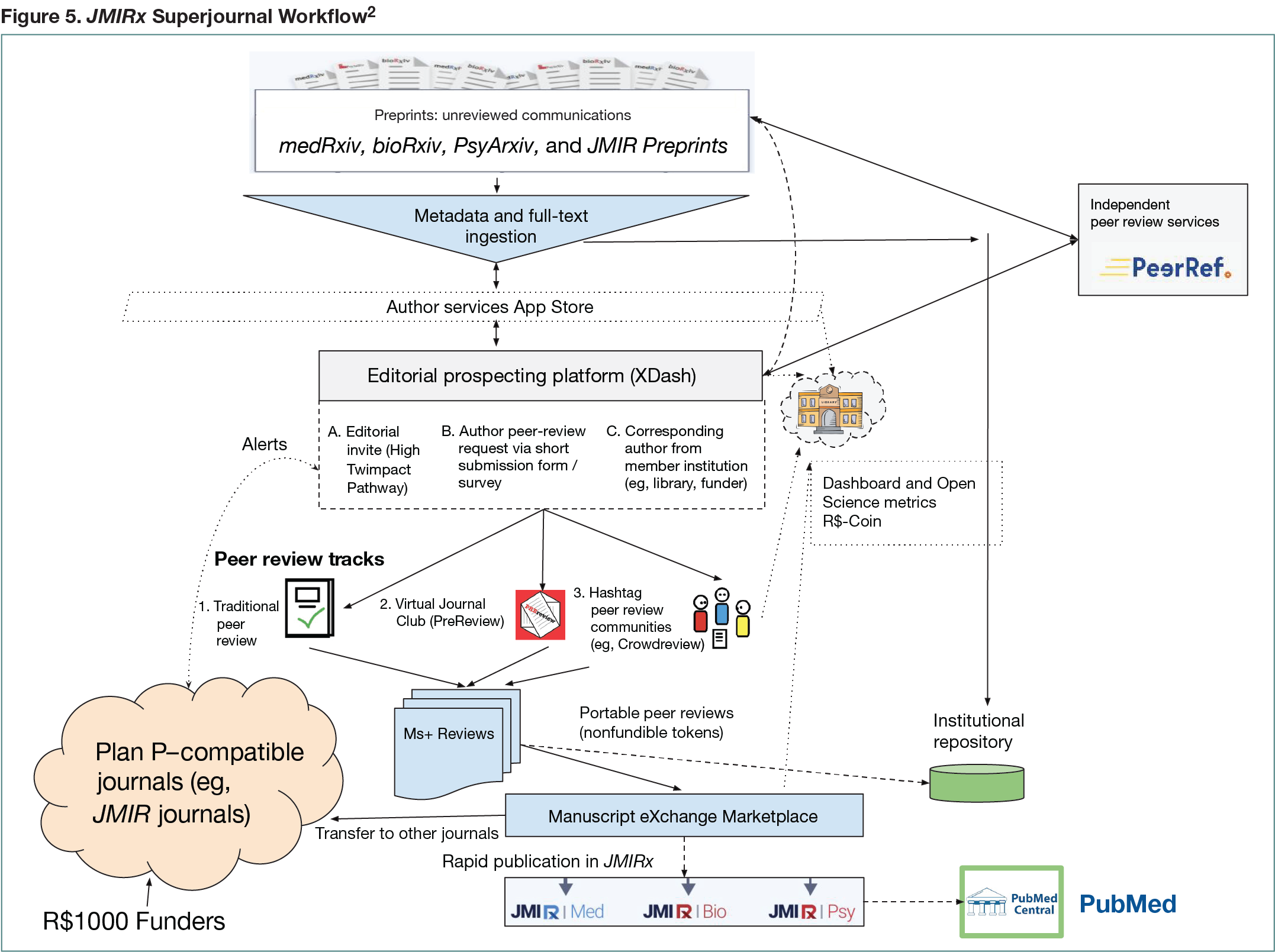Abstract
Early Experiences of the Preprint Overlay Journal JMIRx
Gunther Eysenbach1
Objective
In 2019, JMIR Publications announced the creation of a new series of journals, which are called superjournals, with JMIRx-Med the initial journal launched in that new journal series.1
Superjournals are a type of overlay journal that sit on top of preprint servers, offering rapid peer review and formal publication of revised preprints.1
Design
An editorial prospecting platform (XDash) that invites preprint authors from medRxiv or bioRxiv was developed (Figure 5). All authors received an online survey that asked about motivations on why they posted the preprint, plans to submit to a journal, and whether they would be interested in a peer review of their preprint. Authors of new preprints were contacted as soon as their preprints were posted; no reminders were sent. Only preprints that were not already under peer review at a journal were eligible for consideration for JMIRx. After the peer review process, all peer review reports, author responses, and revised and accepted preprints are published in a JMIRx journal and deposited in PubMed Central/PubMed and institutional repositories of member institutions or, via the Manuscript eXchange Marketplace, offered to other journals for publication.
Results
Between December 19, 2019, and March 9, 2022, 11,143 responses were received. In the same period, 113,724 preprints were posted (response rate of 9.7%, although it is not known how many emails were actually extracted correctly and delivered). Forty-five percent of respondents (5011) submitted their manuscripts to a journal immediately after deposit as a preprint; for 1288 of respondents (11.6%), journals deposited a submitted manuscript on the preprint server on behalf of the authors. Together, these 2 groups represented 56.5% of respondents (n = 6299), whose preprint was already under peer review. The remaining 4844 respondents (43.5%) had not submitted their preprint to a journal yet. A total of 869 (7.8%) had no plans to submit to a journal, 3409 preprint authors (30.6%) planned to submit the preprint to a journal, and 1976 (17.7%) expressed interest in a peer review. A total of 7676 authors (68.9%) also indicated they absolutely need to publish the preprint in a journal with an impact factor, and 6560 authors (58.9%) indicated they wanted their publication indexed in PubMed.
Conclusions
The JMIRx concept is welcomed by some authors looking for a rapid publication venue.
References
1. Eysenbach G. Celebrating 20 years of open access and innovation at JMIR Publications. J Med Internet Res. 2019;21(12):e17578. doi:10.2196/17578
2. Stern BM, O’Shea EK. A proposal for the future of scientific publishing in the life sciences. PLoS Biol. 2019;17(2):e3000116. doi:10.1371/journal.pbio.3000116
1JMIR Publications, Toronto, ON, Canada, geysenba@gmail.com
Conflict of Interest Disclosures
Gunther Eysenbach has an equity stake in and receives a salary from the publisher.

